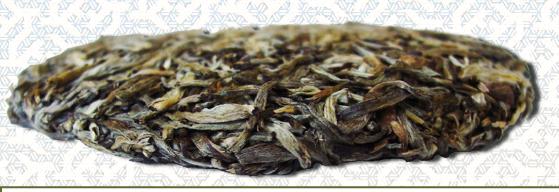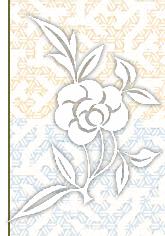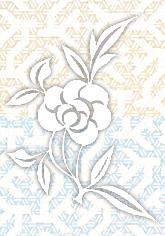 |
||||||||||||||
 |
||||||||||||||
 |
||||||||||||||
 |
||||||||||||||
 |
||||||||||||||
 |
 |
|||||||||||||
 |
||||||||||||||
 |
||||||||||||||
 |
||
101 Pu-Erh Tea Cake, Cha Bing
There are two general types of Pu-erh, Dark and Green. Dark pu-erh is made by piling tea leaves into heaps until they brown from internal heat and oxidization. This type of pu-erh is unfavorable to green pu-erh because it only mimics the aging process and destroys some of the beneficial nature of the leaves.
Green Pu-erh, Sheng Pu-erh meaning "fresh" "raw” or "un-cooked” is the oldest type of Pu-erh and before the 1970’s most Pu-erh was of the green process type. Green Pu-erh has various grades of the full leaf green teas made with Yunnan’s broad leaf varietals called Sai-qing Mao Cha (Sun Dried Silky Tea or for the manufacturing of compressed Green or Black Pu-erh. The more reserve grades of sun-dried green tea or “Saiqing” consist of pure leaf sprouts and buds known as “Saiqing Ya Cha” which are sorted out of “Saiqing Mao Cha” by hand. In some cases, only the buds and tender leaf shoots are plucked from the tea trees to make “Saiqing Ya Cha” or “bud tea”. This Sun-dried green tea or “Saiqing Mao Cha” is made by withering, roasting, rolling, kneading in the Sun, reversing and drying in the Sun before grading.. Both “Saiqing Mao Cha” and “Saiqing Ya Cha” are found in loose leaf styles but most is used to make compressed Green Pu-erh or fermented for Black Pu-erh. Most Green Pu-erh is of the compressed type and available in many interesting shapes such as large round tea cakes that look like ancient money like our Green Pu-erh Tea Cake. Compressed Green Pu-erh is made with sun-dried green tea, “Saiqing” that is steamed until soft and pliable. After “Saiqing” is steamed it is then compressed before being dried in a series of stages according to the quality and type of Green Pu-erh being manufactured. Commonly young pu-erh is not preferred because of its hashness and smoky aftertaste, that's why most any other pu-erh one buys must be aged up to at least 7 years in a land thats has a higher humidity level and warmth. This softens the intensity of the raw pressed leaf. Our Ancient tea can be enjoyed even just after processing with suprisingly smooth flavors of apricot, plum and wild leaf. If they are aged they will become even more complex soft and rich, gaining value in all aspects.
Old growth tea are known to be more potent in aromas, vital energy and healing nutirents. Our tea from 800-1000 year old trees have deep roots and broad branches drawing more from the organic soil and environment around them. Green Pu-erhs a unique and smooth character reminiscent of honey and plum. Green Pu-erh teas are good for long term aging in the proper conditions and also taste superb within the same year of harvest.
Pu-Erh Tea has been known long in history with its political and culture values. Pu-Erh Tea started in Yunnan province with growing areas above 5250 ft (1600 m) that covers regions along Lan Cang River.
Traditionally, it is believed Pu-Erh quality and taste improves with age, and so does its price. Its taste is often described as earthy but some very well aged Pu-Erh produce cups of incredibly smooth and wonderfully complex beverage. It is also renowned for its medicinal qualities, as Pu-Erh can assist in reducing weight by having an effect on the fats in the blood stream and in the tissues found in recent study. According to Traditional Chinese Medicine, Pu-erh tea has a warming and potent digestive property. Chinese doctors consider Pu-erh as a tea that dispels or cleanses the body of fat and toxins from meat and oily foods, helping to lower cholestorol.
Heard of Green Pu-Erh? In 2004, 101 TEA Plantation has taken Pu-Erh Tea into another level by introducing a new process that gives Pu-Erh a totally new presence by using the fresh tea leaves produced from those thousand-year-old tea trees in The Ancient Tea Plantation. The process gives a new life to the leaves from the ancient tea trees but retains the incredible sweetness and the unique Pu-Erh flavor in the tea; you have to try it to appreciate this magic!
Characteristics of Green Pu-Erh:
Dry Leaves: unbroken, tightly packed long leaves with two leaves and a bud; dark green shade with white tip; unique elegant aroma.
Infused Leaves:large even green leaves that can be steeped multiple times.
Liquor: light green color; crisp floral aroma; very sweet taste.
Preparation Recommendation:
Bring spring water to boil at temperature 203° - 212°F (95°- 100°C).
Try 1 teaspoons (2 grams) of tea per 6-oz (180 c.c.) of water. Adjust time and amount of tea to fit personal taste.
For brewing in smaller traditional teapots, fill teapot 1/3 full with dry leaves, use multiple short steeps with gradually increased time for each additional steeping to retain flavor.
Storage:
Place tea in earthenware container or store in a cool, dry place that is not exposed to the sun, and with clean air flow.
Always handle tea with dry hands and tools.